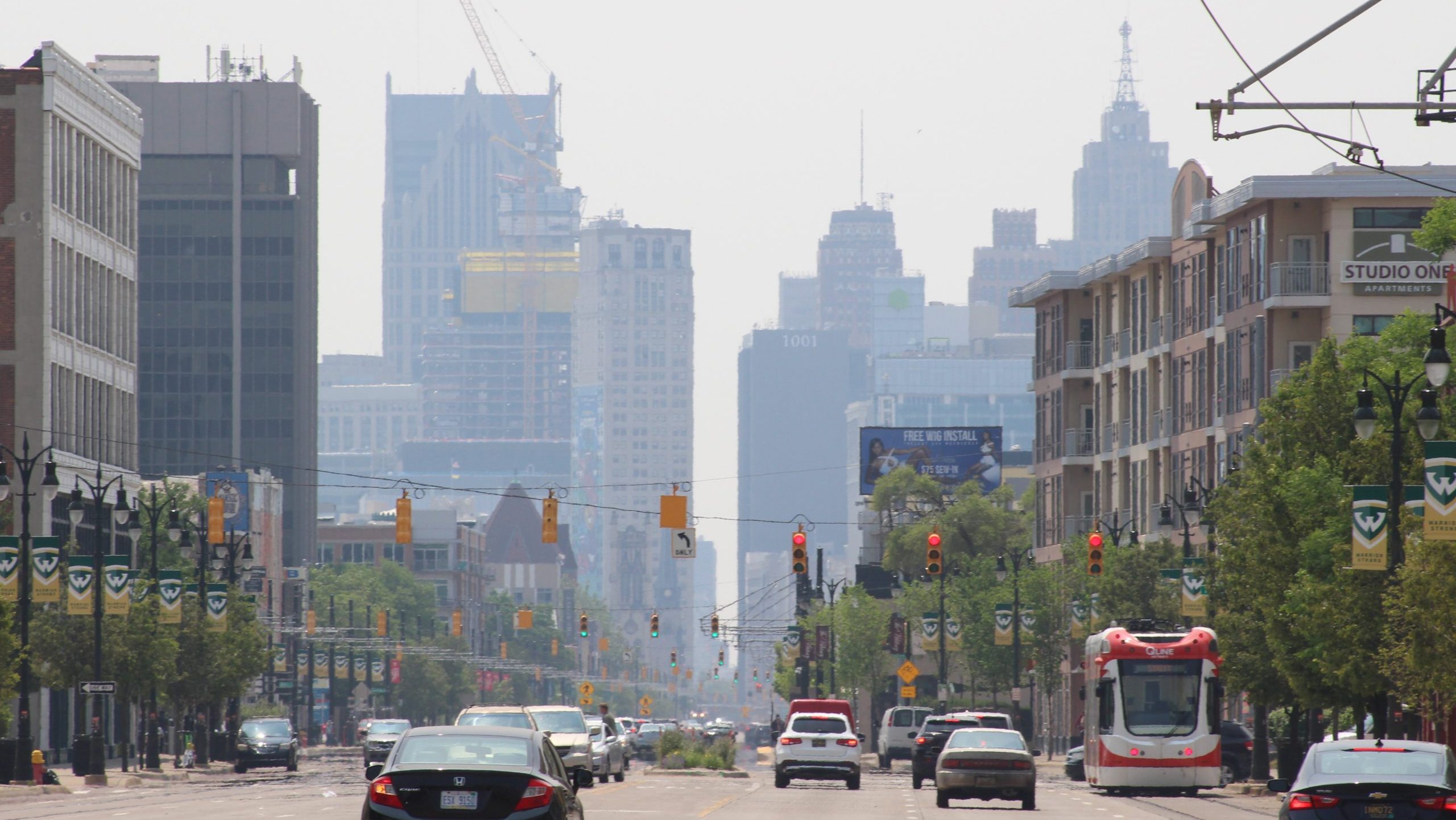The Baltimore Banner thanks its sponsors. Become one.
Maryland
Maryland leads the nation for rate of migrant children
:format(url)/cloudfront-us-east-1.images.arcpublishing.com/baltimorebanner/MVTYU3EZMNCSJKR7KMZCMFHYXQ.png)
Two Maryland ZIP codes are among the most common destinations in the United States for migrant children
Thousands of migrant children are coming to Maryland every year. One ZIP code in Southeast Baltimore saw an influx of nearly 1,800 migrant children from 2015 to 2023, among the most in the country over that time.
ZIP code 21224, home to parts of Canton, Brewers Hill and Greektown, saw more children from other countries — most of them in South America — than all but 13 other ZIP codes in the United States.
And it wasn’t even atop the list in Maryland.
Another ZIP code, this one in Prince George’s County, ranked No. 2 in the nation. Across Maryland, tens of thousands of unaccompanied migrant children have arrived since 2015. They often end up in homes with distant relatives, or even strangers.
It’s part of a surge over the last few years that thrust Maryland into the center of a national crisis surrounding migrant children. Between January 2015 and May 2023, more than 30,000 unaccompanied migrant children were placed in Maryland. That’s 49 children per 10,000 state residents.
No other state was even close.
Washington, D.C., was a distant second with 35 migrant children per 10,000 residents.
Maryland saw a surge in these migrant children in 2021, along with much of the nation, according to data from the U.S. Department of Health and Human Services, obtained last year by The New York Times. HHS is responsible for placing migrant children with adult sponsors.
Sometimes, the children are reunited with their parents. But more and more of the migrant children coming to Maryland are placed with someone other than their mother or father. Often that means an aunt, uncle or other family member, the data shows. But sometimes it can be more distant relatives, or even a complete stranger.
In 2015, more than two-thirds of the children who came to Maryland were placed with their parents. By 2023, that number had plummeted to 37%.
Like the nation as a whole, the vast majority of the children come to Maryland from one of three countries: Guatemala, Honduras and El Salvador.
Prior to the pandemic, more children came to Maryland from El Salvador, but since 2020, the number of children from Guatemala and Honduras has caught up. Now, more children come from Guatemala than any other country.
The children coming from Guatemala are much more likely to be placed with someone other than a parent. Just 41% of those children ended up with their parents, compared to 51% for Honduran children and 55% for those from El Salvador.
Within Maryland, Prince George’s County — the second-largest county by population in the state — saw by far the most unaccompanied migrant children. Nearly 10,000 such children, around one-third of the state’s total, wound up in Prince George’s County.
More than 3,200 children were sent to ZIP code 20783, near Adelphi, just outside of Washington, D.C. That’s the second-highest total for any ZIP code in the nation, second only to a part of Houston, Texas. About 60% of the people who live in 20783 are foreign-born, according to U.S. Census Bureau data. It is among the ZIP codes with the highest percentage of foreign-born residents in the nation.
It’s not the only hot spot in Maryland. Another ZIP code, 21649 in eastern Maryland along the Delaware border, home to the small cities of Marydel and Templeville, was sixth in the nation for migrant children per capita. That ZIP code was home to just 2,200 people in 2022. It saw an influx of 137 migrant children over an eight-year period, a substantial increase for an area of that size.
In Anne Arundel County, the top ZIP code is 21225, which spans both Brooklyn Park in Anne Arundel and parts of south Baltimore City. About 61% of the population in that ZIP code lives in Anne Arundel. In Baltimore County, it was 21222 in Dundalk. In Howard County, it was 21045 in Columbia.
Maryland’s population has been essentially flat since 2020. The state would have lost people if not for international migration, according to Census data. The state has only added 3,000 people since the decennial census, but nearly 100,000 people have moved away to other states. International migration has offset those losses substantially, likely including many of the 15,000 migrant children who have moved here since 2020.

Maryland
Women aim return to Maryland’s federal delegation: ‘We should have our representation’

On the 100th anniversary of women’s suffrage a few years ago, there were no women representing Maryland in the country’s highest elected offices.
And by the time the 119th Congress gavels in next January, three decades will have passed since more than one woman served in Maryland’s U.S. House delegation. In that time, a half-century of federal abortion protections were overturned, and massive cultural shifts, like those around sexual harassment and abuse in the wake of the #MeToo movement, have only seen more intense public and political debates.
Maryland’s drought, however, may soon be over.
In Tuesday’s Democratic and Republican primaries, six women won 18 of the nominations to represent Maryland in the U.S. House or Senate.
Democrats are excited about a trio they believe stands a good chance of making it to Washington — Angela Alsobrooks, who faces former Gov. Larry Hogan in the Senate race; and Sarah Elfreth and April McClain Delaney, who are looking to succeed Democratic U.S. Reps. John Sarbanes and David Trone, respectively.
Maryland’s delegation has eight U.S. House members and two senators. Eight of the 10 are white men, and Maryland has never had a U.S. senator who was Black.
“Women are 52 percent of the population. We should be holding at least six of those seats,” said Diane Fink, executive director of Emerge Maryland, which recruits and trains women to run for elected office.
On the Republican side, Kim Klacik will face Baltimore County Executive Johnny Olszewski Jr., Michelle Talkington will go against longtime U.S. Rep. Steny Hoyer in the counties of Anne Arundel, Calvert, Charles, Prince George’s and St. Mary’s, and Cheryl Riley will face U.S. Rep. Jamie Raskin in Montgomery County.
Klacik lost a 2020 race against Kweisi Mfume in Baltimore’s 7th Congressional District. Hoyer and Raskin overwhelmingly won their most recent reelection bids in 2022 with 66% and 80% of the vote, respectively.
Voter registration and history in each district indicate only the Democratic women would be likely to win. Fink said she was “very optimistic we’re going to get three.”
“Three is a good start, but we’re not done,” said Fink, whose group included Elfreth in its initial class in 2013. “We need women on Capitol Hill to push issues that have been historically back-burnered by men, including autonomy over own bodies, medical decisions, child care issues, education, the environment and much more.”
The last women to serve in the state’s congressional delegation were U.S. Sen. Barbara Mikulski, whose 30-year tenure in the chamber made her one of the longest-serving women in its history, and U.S. Rep. Donna Edwards. Both are Democrats. Mikulski retired in 2017 and Edwards left the same year after losing in the primary for Mikulski’s successor. The winner, U.S. Sen. Chris Van Hollen, is now in his second term.
Edwards sought to become Maryland’s first Black senator, a feat that Alsobrooks could achieve this year in addition to being only the third Black woman elected to the Senate from any state.
2024 Maryland primary: Live returns from Baltimore, congressional races, school boards
The last time two women were part of Maryland’s U.S. House delegation simultaneously was from 1993-95, when Republicans Helen Bentley and Connie Morella overlapped before Bentley left to run for governor, a position that no woman has won in Maryland. Across all of Congress, 151 women serve in the current session, an all-time high, according to the Center for American Women and Politics at Rutgers University’s Eagleton Institute of Politics.
Mikulski supported Alsobrooks, a two-term Prince George’s County executive, and Elfreth, a two-term state senator from Annapolis, in their competitive primaries this year.
“Given that women make up 50% of the population, we should have our representation,” Mikulski told The Baltimore Sun.
“Yes, it’s about gender, but it’s also about the agenda,” she said. “For Angela, the kitchen-table issues are not an abstraction. She knows these issues up close and personal, putting a young lady in college and with her parents facing the high cost of prescription drugs.”

Fink said reproductive rights “is probably at the top” of the issues list this year.
Maryland — with Democrats firmly in control of state government — has expanded abortion protections in the wake of the 2022 U.S. Supreme Court decision that overturned a half-century of precedence of abortion rights under Roe v. Wade. A proposed amendment to Maryland’s constitution will appear before voters in November to determine whether reproductive freedom should be protected further.
Meanwhile, the prospect of nationwide abortion restrictions puts a spotlight on races in Maryland and elsewhere. On Thursday, Hogan, after securing his Republican primary win in the U.S. Senate contest, took an abrupt turn to say he would support codifying Roe’s previous protections if he’s elected. Democrats balked, pointing to Hogan’s record of vetoing bills to protect abortion access as governor.
State Sen. Shelly Hettleman, a Baltimore County Democrat, said having three pro-abortion-rights women as Democratic nominees was “incredibly important in this particular time.”
“At the end of the day, it is women’s bodies that bear the burdens of these decisions, burdens and benefits of these decisions,” Hettleman said. “We need to have folks who I think can understand that in a different way, reflected in the leadership of those who are making those incredibly important decisions.”
Hettleman said her first job in politics was working on Mikulski’s first successful Senate campaign in 1986. She briefly went to work for her on Capitol Hill before switching to then-U.S. Rep. Ben Cardin’s office. She said seeing Mikulski support Alsobrooks felt like a full-circle moment.
“It’s really thrilling,” she said. “Potentially the second woman being elected from Maryland and to have it be a Black woman to crash another glass ceiling.”

Maryland
Let’s make Maryland ‘open for business’ again | GUEST COMMENTARY

Last month, Google unveiled plans to invest more than $1 billion to expand its data centers in Virginia. The investment promises to create hundreds of jobs and serve as an economic engine, generating tax revenue not only in Loudon and Prince William counties, where the centers are to be located, but throughout the entire state. For Virginia, this sort of economic development is not unprecedented. The state is currently ranked as the second-best state for business in the nation.
Meanwhile, Maryland stands at a crossroads, holding the necessary ingredients to be one of the most competitive states but consistently losing out to those around us. Maryland beat Virginia in job growth for four consecutive years between 2015-2018. Maryland was open for business then, and we can be again.
With a prime location in the mid-Atlantic, world-renowned academic research institutions such as Johns Hopkins and the University of Maryland, and a highly skilled workforce that ranks among the best in the nation, it should be a top destination for businesses. Yet Maryland does not rank in the top 10.
Our inability to attract business has a tangible impact on the lives of everyday Marylanders. In January, our comptroller released a report indicating that our economy has not seen substantial growth since 2017. Between the lack of new economic opportunities and persistently surging costs, we are witnessing a decline in the state’s residents and a widening gap between Virginia and Maryland’s economic growth.
As we look to reverse this trend, Maryland must do more to incentivize growth and reduce bureaucratic obstacles.
By offering tax incentives and grants, the Commonwealth was able to reign in billions of dollars in investment from companies like Amazon. More broadly, in 2023, the industry provided the state with over 26,000 jobs, $640 million in state tax revenue, and $47 billion in total economic output.
Recognizing the value data centers can bring, former Gov. Larry Hogan took proactive steps to provide tax incentives to encourage data center development in 2020. While current Gov. Wes Moore is continuing the momentum by providing new incentives in this year’s session, such as streamlining regulatory processes for the industry, we have not addressed the other central issue for Maryland’s economy: overregulation.
This past session, that issue became even worse. Counterintuitive to Governor Moore’s goal of bringing data center growth to our state and uplifting small businesses, lawmakers passed significant, overreaching data privacy legislation. While their intent was reasonable, the legislation they finalized will severely hamstring small business owners across the state, while continuing to pull back the welcome mat from future investments.
Contrary to Virginia’s sensible and clear opt-out provision, Maryland’s new privacy bill essentially calls for our state’s businesses to secure opt-in agreements for processes like customized online experiences and ad measurement. Not even California, the first state to enact major privacy legislation, requires such a provision. As a result, only larger firms with deep pockets will be able to effectively reach their target audiences online and manage the compliance requirements required to do so — harming the vibrant competition in our state’s economy and putting small, locally grown businesses at a steep disadvantage.
As Governor Moore works toward welcoming meaningful investments in the state, we should hope the administration keeps in mind the need to improve our competitive positioning in the region. To break this trend, our course is clear: take a page from Virginia’s playbook and cut out unnecessary red tape while encouraging the growth of promising new industries. By taking these sensible steps, we can unleash Maryland’s full potential and once again make Maryland Open for Business.
Michael Gill (mgill@evergreenadvisorsllc.com) served as Maryland’s secretary of commerce from 2015-’19 and 2022-’23. He also served as the state’s secretary of business and economic development in 2015, among other roles.
Maryland
50,000 ‘uncommitted’ votes cast in Maryland in protest of Biden’s response to war in Gaza

BALTIMORE – More than 50,000 Marylanders voted “uncommitted” in the primary elections as a protest against President Joe Biden and his response to the Israel-Hamas war.
Despite cruising to the Democratic nomination, Biden has faced a substantial vote protest in several states, including Maryland.
Voters in Maryland’s Democratic party for years have had the option to vote “uncommitted” instead of voting for a Democrat candidate.
But this year, that option takes a new importance as activists nationwide are using it as a tool to protest against the president and his response to the war in Gaza.
Unofficial results show that more than 51,000 people voted “uncommitted,” instead of throwing their support behind Biden.
The group “Listen to Maryland” says that while they know the “uncommitted” vote isn’t expected to defeat Biden, it is expected to send a message that protesters are unhappy with the way his administration is handling the war in Gaza.
“We are hoping that this sends a message,” said Samya Mohammed, with “Listen to Maryland.”
Mohammed helped convince thousands of Marylanders to vote “uncommitted” this year on their Democratic primary ballot.
The hope is that the movement will press the president to call for a permanent mutual ceasefire in Gaza.
“We want to see a ceasefire, that we want to see an end to this war and we want to see an end to President Biden sending more military aid and sending more weapons,” Mohammed said.
Mohammed says in four weeks leading up to the election, her team helped rally together thousands of voters to send their message in Maryland’s primary election.
“We want President Biden to listen to us,” Mohammed said.
The option was available on ballots in several other states, including Michigan, Alabama, North Carolina and Tennessee.
And, the effort continues a trend seen throughout the county as pro-Palestianian protests are popping up nationwide on college campuses, including a two-week encampment at Johns Hopkins University that ended peacefully.
While Biden won the Democratic vote in Maryland, Mohammed says she’s hoping his administration is listening to the pleas.
“It was purely a protest vote to send a message to impact policies,” Mohammed said.
It’s unclear if “uncommitted” voters will support Biden in November, but Mohammad says she is hoping that this primary election will signal to his administration to change their policies before then.
WJZ reached out to the Maryland Democratic Party for comment but we haven’t heard back.
-

 Politics1 week ago
Politics1 week ago'You need to stop': Gov. Noem lashes out during heated interview over book anecdote about killing dog
-

 Politics1 week ago
Politics1 week agoRFK Jr said a worm ate part of his brain and died in his head
-

 World1 week ago
World1 week agoPentagon chief confirms US pause on weapons shipment to Israel
-

 News1 week ago
News1 week agoStudents and civil rights groups blast police response to campus protests
-

 World1 week ago
World1 week agoConvicted MEP's expense claims must be published: EU court
-

 Politics1 week ago
Politics1 week agoCalifornia Gov Gavin Newsom roasted over video promoting state's ‘record’ tourism: ‘Smoke and mirrors’
-

 Politics1 week ago
Politics1 week agoOhio AG defends letter warning 'woke' masked anti-Israel protesters they face prison time: 'We have a society'
-

 Politics1 week ago
Politics1 week agoBiden’s decision to pull Israel weapons shipment kept quiet until after Holocaust remembrance address: report
















